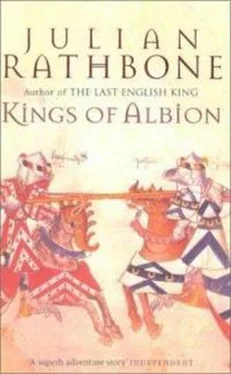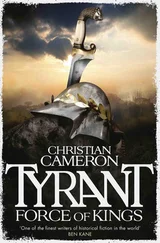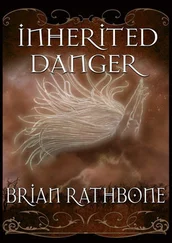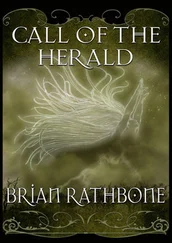The temple itself was small, little more than a large kiosk; an intricately carved roof of sandalwood set on eight slender pillars gave the structure an octagonal ground plan. Under the centre of the finely carved pyramidal ceiling, on a raised octagonal platform, sat the god, a charming brick-red figure with a plump male torso, pantalooned legs crossed on a cushion set in a lotus, with his four hands holding a necklace, an axe, an ornamental sickle and a lotus flower. His elephant head, which bore an expression of open welcome, wore a gold crown, rakishly tilted, decorated again with enamelled lotus flowers while various fine bracelets, anklets, armbands and necklaces of gold chain, pearls and sapphires circled his limbs. Offerings of garlanded flowers, food, sweet cakes and incense were arranged neatly on all sides, and as I stood there admiring this homely, pleasant but rich and enriching figure a small family of husband, wife and three lovely children came in with more offerings.
I should say here that the religion of the Dravidians is not congregational: they do not attend their temples in huge masses to listen to or assist in long ceremonies so there are no huge spaces of the sort one finds in Christian cathedrals or the great mosques of Islam. Believers come singly or as families, to make their simple offerings and commune with the saint, avatar, god or goddess of their choice through wordless meditation.
This charming temple was set in an open garden filled with roses, jasmine and many brilliant and huge flowers unnamed in our tongues since they grow only where the air is always warm and where there is abundant water. There was also a pool where the evening breeze caused lotus flowers to tug at their sub-aquatic moorings above the gold and silver whiskered carp who sought the shade beneath. Birds with brilliant plumage, some so tiny they were no bigger than a child's thumb, others trailing clouds of glorious feathers, flitted, hummed or strutted amongst the bushes and beneath the palms.
One wall was filled with a pavilion in which a dozen or so pallets stuffed with cotton flowers were set out for passing travellers or pilgrims to take their rest, but not before dark-skinned maidens with almond-shaped eyes, clad in rose and emerald silks, had brought us bowls of rice, spiced vegetables, and cakes spiked with bhang, no doubt taken from the day's offerings to Ganesha. They danced sinuously, dramatically and, I have to say, provocatively to a small group of musicians with long-armed rebecs and pottery drums to which the girls added the silvery chime of their finger cymbals. Some of the older of these dancers offered themselves freely to the more prepossessing of our company for conversation, dalliance and, if the mood took them, love beneath the silken sheets that covered our pallets.
I arose with the sun and breakfasted off ripe mangoes and spiced bread, which I found had been left at the end of my bed, and washed myself in a marble basin set in the wall behind the pavilion. Thus refreshed I made my adieux to the temple maidens before strolling down wide, palm-lined boulevards to the Royal Enclave. It soon became clear that I was part of a swelling crowd making its way to a huge square, whose centre was a magnificent platform some thirty feet high and some hundred and more paces square, made out of granite and rock that sparkled with green crystals. It was pavilioned in splendid fabrics and jewels and girded with as yet unlit flambeaux and torches. As we made our way down, I fell in with a young man whose simple garb, shaven head but proud mien suggested that I was in the presence of a neophyte of some priestly order.
In Urdu, the lingua franca of those parts, he explained to me why he and the countless others around us were there. Such was the interest I felt in what he had to say, I walked with him right down to the big square with its platform, leaving the Royal Enclave behind me.
'Tonight,' he explained, and his voice was soft and musical, though quite deep, 'is the first of nine that make up the great festival of Mahanavaini, which celebrates the end of the wet season. People are already gathering to be sure of getting places in the Square around the platform from which they can enjoy the best views of the joyful celebrations that will begin at nightfall…' He went on to describe the form the festivities would take – a succession of dances by troupes from each ward of the city – and as he did so I took the opportunity to examine his appearance more carefully.
He was about twenty years old. perhaps a little more, not tall but. as far as his voluminous but simple gown would allow me to guess, well built, with long hands and lingers and long feet. His head was round and shaved to a short furry pelt with a ridge of longer hair, an inch or so long, running from his forehead to the nape of his neck where it ended in a small twisted pigtail. His eyes were dark, large and deep-set beneath a long bushy eyebrow that had no gap in the middle. Often they seemed focused on some distant or perhaps inner reality, but when brought to earth they glowed with humour and an affection too easily bestowed. His voice, as I have indicated, was deep but gentle, not in the least harsh.
I expressed disappointment that I might miss the performances, or at least be left on the outer fringes of the crowd, as I expected to have to spend most of the day tracking down Prince Harihara Raya Kurteishi. But my new friend insisted that first I must go with him ami see where he would station himself in the throng so I could join him there later. Once established at a good vantage-point he would give me directions to the palace or the part of the complex of palaces where I would most probably find the Prince. When I suggested that I might have to make an appointment and cope with the formalities and bureaucracy that protect such high dignitaries in most countries, he told me there should be no problem. All the members of the Emperor's family, and indeed most of the senior members of the Royal Household, made themselves available to the general public for long periods every day; while I might be involved in a long wait until my turn came up. I should surely be seen before dusk.
On our way I quizzed my companion about various aspects of the crowd that puzzled me, the two most notable being the way in which the well-to-do mingled freely with the labourers, artisans and peasants, and the absence of any soldiers, armed men. tribunes, constables and the like. This was not the India, surviving under Islam, that I had come to know on my three previous visits to the northern ports. Here was no apparent caste system, no rigid social codification according to occupation or ancestry, no snobbery taken to the level of designating some people as untouchable.
My friend, who said he went by the name of Suryan, explained to me that the river Krishna to the north, of which the Tungabhadra was a tributary, was not only the border between Vijayanagara and the Bahmani sultanates but also marked the southern limit of the Aryan invasions many centuries earlier. It was the Aryans, he said, few in number but warlike and well armed, who had imposed upon the conquered populace of central and northern India laws whereby only Aryans or their descendants could hold land, bear anus or belong to the priesthood. In time these practices had been codified as the Bhahminical system, which gave apparently god-ordained legitimacy to a ruthless oppression.
However, he continued, the old practices continued south of the Krishna under the Dravidian Chola dynasties, then later still under the benign rule of the Vijayanagaran Deva Raya dynasty.
'So what is the real Hinduism?' I asked, attempting to conceal my ignorance of what he was talking about, all of which seemed to him self-evident
He began by asserting that the word itself was Persian and not Dravidian. He went on: 'Naturally, since the Aryans adopted our religion there remains much in common. We honour the same manifestations of godliness. Shiva, Vishnu, their consorts and offspring, but often under different names and very often without any ot their harsher characteristics. Indeed there is a gender reversal in their pantheon since the goddess, especially in the form of the beautiful Parvati, is here honoured above the male gods. But we also honour the spirits of place, of trees, springs, seasons and the like, most of whom are also female. I attach myself particularly to the cults of Rati who rides on a swan, her consort Kama, the god of love, Skanda, who rides on a peacock, and Sarasvati, goddess of music and learning.'
Читать дальше












